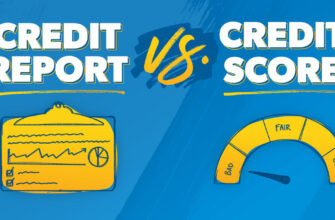What is P2P lending and how does it work?
Peer-to-peer (P2P) lending is a method of borrowing and lending money directly between individuals through online platforms, bypassing traditional financial institutions. P2P lending platforms connect borrowers in need of funds with lenders willing to lend their money. Here’s a breakdown of how lending typically works:
- Borrower Application: Individuals seeking a loan submit their loan application on a P2P lending platform. They provide information about the loan amount they require, the purpose of the loan, their creditworthiness, and any other relevant details requested by the platform.
- Risk Assessment: lending platforms assess the creditworthiness of borrowers through various means, including credit checks, income verification, and analysis of their financial history. The platform assigns a risk rating or score to each borrower based on this assessment.
- Loan Listings: Once the borrower’s application is approved, the loan details are listed on the lending platform’s marketplace. The listing includes information about the borrower, loan amount, interest rate, loan term, and risk profile. Lenders can review these listings to choose loans they are interested in funding.
- Lender Selection: Lenders browse through the available loan listings on the platform and select the loans they wish to fund. They can evaluate the risk profile of each borrower and make decisions based on their own risk appetite and investment preferences.
- Loan Funding: Lenders contribute a portion of the loan amount requested by the borrower. The loan is typically funded by multiple lenders, with each lender contributing a fractional amount. This spreading of investment reduces the risk for individual lenders.
- Loan Repayments: Borrowers make regular repayments on the loan, typically on a monthly basis, which includes both principal and interest. The P2P lending platform handles the collection of repayments from borrowers.
- Distribution of Repayments: The platform distributes the repayments received from borrowers among the lenders who funded the loan. Each lender receives their share of the repayment based on the amount they contributed to the loan.
- Platform Fees: lending platforms charge fees for their services, both to borrowers and lenders. These fees are usually a percentage of the loan amount or interest earned by lenders.

It’s important to note that the specific processes and features may vary among P2P lending platforms. However, the general concept revolves around facilitating direct borrowing and lending between individuals through an online platform, creating opportunities for borrowers to access financing and lenders to diversify their investment portfolios.
Advantages
- Access to Financing: peer-to-peer credits provide individuals with an alternative source of financing, especially for borrowers who may face challenges obtaining loans through traditional channels. It opens up opportunities for individuals with limited credit history or lower credit scores to access funds for various purposes, such as debt consolidation, education, or starting a small business.
- Competitive Interest Rates: lending platforms often offer competitive interest rates compared to traditional financial institutions. The absence of intermediaries reduces operational costs, allowing borrowers to potentially secure loans at lower rates. Similarly, lenders can earn higher returns compared to conventional investment options.
- Diversification of Investment Portfolios: P2P credits allow lenders to diversify their investment portfolios. By spreading their investments across multiple loans, lenders can mitigate risks associated with default. This diversification can be achieved by lending small amounts to several borrowers, reducing exposure to individual default risks.
- Speed and Convenience: lending platforms leverage technology to streamline the borrowing and lending process. The online nature of these platforms allows for quick loan approvals and disbursements, enabling borrowers to access funds faster than traditional lenders. Similarly, lenders can deploy their capital efficiently, reinvesting in new loans as soon as previous ones are repaid.
- Empowerment and Direct Interaction: peer-to-peer credits empower individuals by providing them with greater control over their financial decisions. Borrowers can negotiate loan terms directly with lenders, and lenders have the freedom to choose the loans they want to fund based on their risk appetite and personal criteria.

Disadvantages
- Default Risk: lending carries the risk of borrower default. Despite risk assessment measures, there is a possibility that borrowers may fail to repay their loans. This can result in partial or total loss of invested funds for lenders. It is essential for lenders to diversify their investments and assess borrowers’ creditworthiness to mitigate this risk.
- Platform Reliability: The success and reputation of lending platforms are critical. Some platforms may not have established track records or robust risk management practices. It is important to thoroughly research and select a reputable platform with transparent operations, reliable customer support, and effective mechanisms to handle potential defaults.
- Regulatory Environment: lending is subject to evolving regulatory frameworks in different jurisdictions. Compliance with these regulations ensures transparency and protects the interests of borrowers and lenders. It is crucial to understand the legal and regulatory aspects governing P2P lending platforms in your respective region to ensure compliance and protection.
- Lack of Personal Interaction: While lending offers convenience and direct interaction through online platforms, it lacks the personal touch and relationship-building aspect that may be present in traditional lending institutions. Borrowers and lenders may not have the opportunity for face-to-face communication or personalized assistance.
- Limited Redress Options: In case of disputes or issues, the recourse options for borrowers and lenders in peer-to-peer lending may be limited compared to traditional financial institutions. Resolving conflicts may require engaging legal services or going through arbitration processes, which can be time-consuming and costly.
- It’s important for individuals to weigh these advantages and disadvantages, considering their specific financial needs, risk tolerance, and the regulatory landscape, before participating in P2P lending activities.
Are P2P payments instant?
Peer-to-peer payments can be near-instantaneous, but the actual speed of the transaction can vary depending on several factors:
- Payment Method: The speed of this type of payment can be influenced by the chosen payment method. Some payment platforms utilize bank transfers, which may take a few business days to complete. Other platforms may leverage instant payment systems or digital wallets that allow for faster transfers.
- Platform Infrastructure: The efficiency and speed of P2P payments can also depend on the infrastructure and technology employed by the specific P2P payment platform. Established platforms with robust systems and optimized processes tend to offer faster payment processing times.
- Verification and Security Checks: payment platforms may implement verification and security measures to protect users and prevent fraudulent transactions. These checks can add a slight delay to the payment process, ensuring the authenticity and security of the transaction.
- Bank Processing Times: If payments involve bank transfers, the processing times of the respective banks involved can impact the speed of the transaction. Banks may have their own internal procedures for processing transfers, which can introduce additional delays.
- Network Connectivity: The speed of peer-to-peer payments can also be influenced by the stability and strength of internet or mobile network connectivity. Unstable connections or network issues can result in delays or failures in initiating or completing P2P transactions.

Overall, while peer-to-peer payments can be relatively fast compared to traditional methods, it’s important to consider the factors mentioned above that can affect the speed of the transaction. Different payment platforms may have varying processing times, so it is advisable to review the specific platform’s documentation or contact their customer support for information on transaction speeds.








